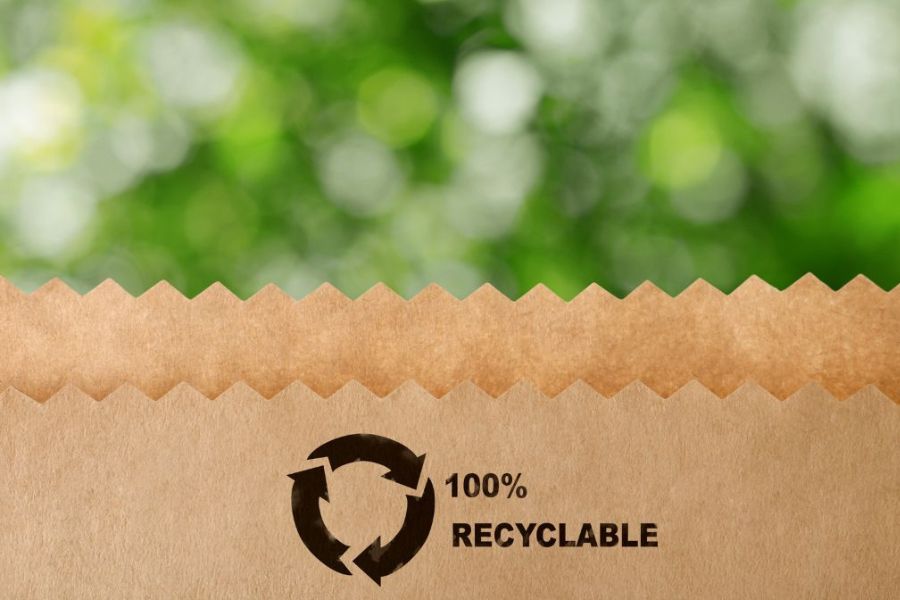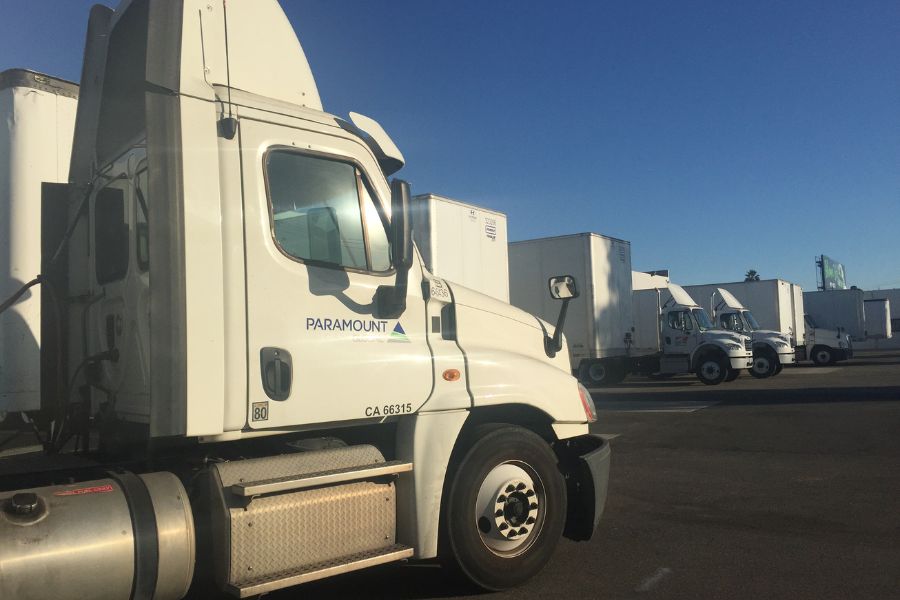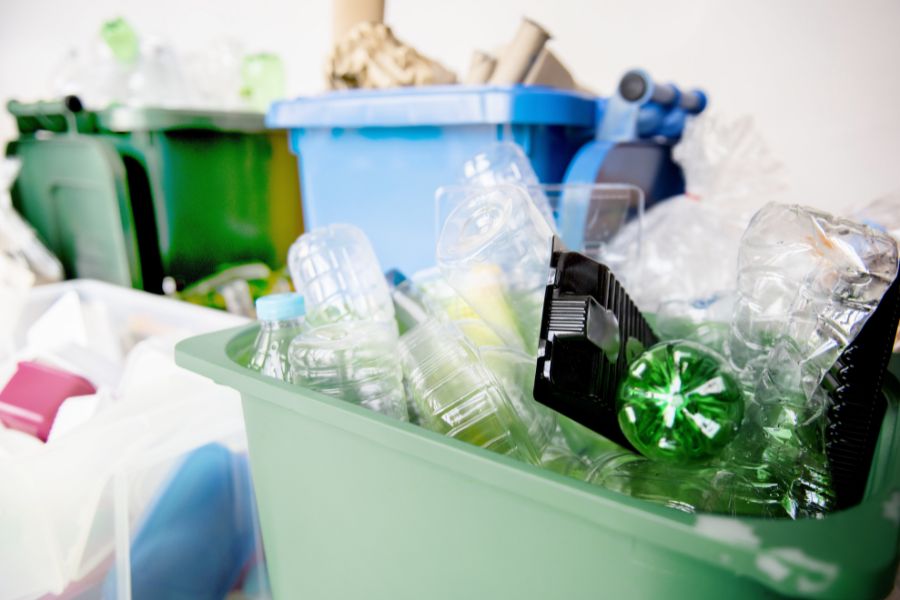How to Reduce Packaging Waste in Your Supply Chain

Waste of any kind isn’t ideal, no matter what type of business you work in. Waste means extra materials, inefficient use of products, unprofitable spending, and even more serious problems like environmental and social damage. Reducing waste, therefore, should be a priority in every industry.
Nearly every business encounters packaging waste. It’s also a major source of pollution in landfills and marine environments around the world. While packaging products for sale and shipment is necessary, it’s important to consider how we can do our part to work towards packaging solutions that come with minimal waste.
What is Packaging Waste?
Packaging waste is any material used to protect, ship, or store products and is generally discarded after use. Packaging plays an important role in the transportation and marketing of products, so you can’t eliminate packaging materials entirely. What you can do is make sure that the amount of waste created from your packaging process is as minimal as possible and aim to achieve a low-waste or zero-waste packaging solution.
Virtually anything used for packaging can become waste, including plastic, paper, glass, cardboard, wood, and metal. Of these materials, plastic is the number one contributor to packaging waste. Single-use plastic, or plastic that cannot be recycled or reused, causes major problems in the environment across the globe. Plastic containers, bags, bottles, and electronics all generate a significant amount of packaging waste.

The Growing Problem and Impact of Packaging Waste
Nearly one-third of all municipal solid waste in the United States can be attributed to packaging, according to data from the Environmental Protection Agency (EPA). That’s a massive amount of waste, and it comes from nearly every industry. Liquids need to be stored in bottles and have closures, food needs to be kept at the right temperature in the appropriate material, and fragile items need to be protected during shipping.
In addition, consumers are becoming more aware of the large scale waste problem affecting our air, oceans, and landfills. With the increase in online shopping and litter from single-use products like coffee cups and the decrease in the recycling rate, total waste is a massive global problem. The consumer consciousness puts pressure on businesses to make major changes and sustainable and environmentally friendly packaging choices to reduce the amount of waste from packaging.
Types of Packaging Waste
Common examples of packaging waste include:
- Plastic product wrappers and seals
- Plastic bags from grocery stores
- Plastic rigid containers such as bottles, jars, and tubes
- Shipping materials (styrofoam, bubble wrap, plastic wrap)
- Plastic straws and lids
- Styrofoam cups and takeout containers

Benefits of Reducing Packaging Waste
Minimizing packaging waste should be a top priority for all businesses. Embracing a waste management program and actively reducing packaging waste offers numerous advantages. Let’s explore some of the most significant benefits.
Environmental Benefits
The first benefit has to do with the natural environment. This is typically what we think of first when considering the impact of packaging waste, as our minds go to industrial chemicals leaking into water systems or plastic and other waste filling up landfills. By reducing packaging waste, you can diminish landfill waste, cut back on greenhouse gas emissions, conserve natural resources, and reduce pollution.
Financial Benefits
An important advantage for businesses is the potential cost savings achieved by minimizing packaging waste. By optimizing your packaging methods, you can lower expenses related to packaging and transportation, reduce disposal costs, and enhance workplace productivity.
Social Benefits
Waste reduction also has social benefits. Adopting sustainability and zero-waste packaging can make your brand more appealing to customers, increase loyalty, improve your company’s reputation, and ensure compliance with regulations.
Operational Benefits
Ultimately, cutting down on packaging waste has a positive ripple effect throughout your entire operation and supply chain. Instead of dealing with excess materials cluttering your workspace, you can optimize your processes. This leads to enhanced inventory management, reduced damages and losses, improved supply chain visibility, and even the potential for more efficient logistics and transportation services through waste-free packaging solutions.

Ways to Reduce Packaging Waste in Your Supply Chain
Now that you understand the significance of addressing packaging waste and seeking solutions, let’s explore some of the most effective methods for minimizing packaging waste across your supply chain.
Optimize Package Design
First, optimize the design of your packaging. Packaging plays a major role in your branding and marketing strategies, so you’ll want to choose a packaging option that suits not only your product but also your marketing goals.
Use Sustainable Materials
To optimize your packaging, use eco-friendly and reusable packaging materials such as glass, paper, bamboo, natural fibers, and biodegradable plastics. These types of materials have multiple uses and can be recycled or composted to reduce waste.
Reduce Excess Packaging
Oftentimes companies use excessive packaging purposefully, such as cardboard sheets, plastic wrapping, or extra material within boxes to use as a buffer. Exploring alternative ways to package and protect your products can help optimize your design. For example, consider using buffer material that is 100% recyclable or compostable and reducing the amount of excess materials used in shipping.
Implement Sustainable Materials
Sustainable materials can serve a broader purpose beyond product packaging; they can become the foundation of your business’s manufacturing process. By integrating sustainable materials throughout your supply chain, you can readily refine your design processes and establish yourself as a brand that is committed to sustainability.

Reduce Waste from Transportation
Another common source of waste arises during the transportation of products through the supply chain. It’s essential to ensure safe product delivery to minimize returns or refunds due to damaged goods. However, there are strategies to make transportation as waste-free as possible.
Consolidate Shipments
Instead of shipping orders individually or dispatching partially filled pallets, opt for consolidating your shipments. This practice reduces the packaging required for each outgoing load from your site, leading to a reduction in labor needs for packaging and shipping, ultimately minimizing the margin for errors.
Use Efficient Packing Techniques
Not all packing techniques are the same. Prioritizing speed over efficiency often leads to more waste. While shipping out orders in a timely manner is good business practice, rushing without regard to the amount of waste being created is not. This is an area that your company can examine and improve processes as needed. Consider implementing packing techniques that support sustainability and waste reduction in your business operations.
Review Eco-Friendly Transportation Options
Just as with packing techniques, not all transportation options are created equal. Evaluate your existing transportation strategy to identify companies or transportation methods that align better with your sustainability goals. Partnering with companies that also prioritize environmentally friendly practices will help you reach your sustainability goals and see the results of your efforts.
Adopt Efficient Packaging Processes
Adopting efficient packaging processes is an essential part of any manufacturing or supplier operation. Ensuring that your processes are operating efficiently and hitting your marks will help you stay on target and reach your sustainability and waste reduction goals.
Reduce Over-Packaging
Over-packaging occurs when an excess of packaging layers and buffers are used to protect your products. Sometimes this is done out of necessity for highly fragile pieces, however, it’s often done out of an abundance of caution and outside of regulations and requirements. Assess the amount of excess packaging used in your shipments and consider eliminating some if possible to reduce waste. One of the incentives for reducing over-packaging is by lowering your per-shipment packaging weight and the amount of packaging used, you can reduce your overall expenses on packaging and shipping costs!
Implement Just-in-Time Inventory
Just-in-time (JIT) inventory is an inventory management strategy that requires close collaboration with suppliers so that raw materials arrive right as production is scheduled to begin, but no sooner. The goal is to have a minimum amount of inventory on hand to meet demand.
Use Automation
Leveraging automation is pivotal for optimizing packaging processes and minimizing waste. Automated systems enhance precision, speed, and consistency in packaging, reducing material waste and human error. By streamlining the workflow, businesses can achieve higher efficiency, lower production costs, and contribute to sustainability goals through reduced packaging waste.

Implement a Waste Management System
The last step in reducing waste across your supply chain is to establish a waste management system. Instead of addressing waste after it has become a problem, proactively implement waste management measures to prevent and minimize waste before it becomes an issue. Providing information within your facility on how to properly dispose of waste is a great place to start to get your entire team focused on managing and reducing waste.
Conduct Waste Audits
During a waste audit, you take the time to scrutinize your processes to assess packaging quality control and identify areas of excessive waste within your business. Conducting regular waste audits enables you to swiftly identify errors and monitor your program for continuous improvement.
Recycle and Composting Programs
Implementing recycling and composting programs within your facility is a sustainable practice that promotes responsible waste management. By designating bins for recyclables and compostables, you can divert a significant amount of waste from landfills. This not only reduces environmental impact but also cuts disposal costs. Keep in mind, however, that not all recycling programs are as easy as throwing cardboard into a recycling bin. You may have to search for a recycling or composting program that fits your needs and location. Finding and implementing these programs can not only help you manage your waste but executing eco-friendly initiatives can also improve your facility’s reputation while establishing a greener, more socially responsible image.
Encourage Supplier Participation
Your supply chain partners consist of buyers, suppliers, and vendors outside of your company. By encouraging the companies you collaborate with in your supply chain to participate in waste management, you can amplify the amount of waste reduction in your supply chain leading to even greater benefits.

Start Reducing Packaging Waste Today
The first step in reducing packaging waste begins with understanding your current packaging processes. Once you have a solid understanding of your current practices you can make improvements and determine the best way to start reducing packaging waste in your business.
At Paramount Global, we offer a multitude of sustainable packaging solutions and partner with businesses like yours to help implement your commitment to sustainable packaging processes. We can determine the best types of packaging materials to use for your products, so they are safe, well designed, and environmentally friendly. To learn more about how we can help you improve your packaging strategy, contact us today.
Hayley is a marketing professional and copywriter with a background in crafting content for a diverse range of industries. She has been writing about packaging and supply chain logistics for Paramount Global since 2022. She specializes in explaining complex topics in a clear and engaging way and is an advocate for sustainability in packaging and supply chain management.
Read More
For over forty years, Paramount has been delivering perfectly integrated packaging and supply chain solutions.
